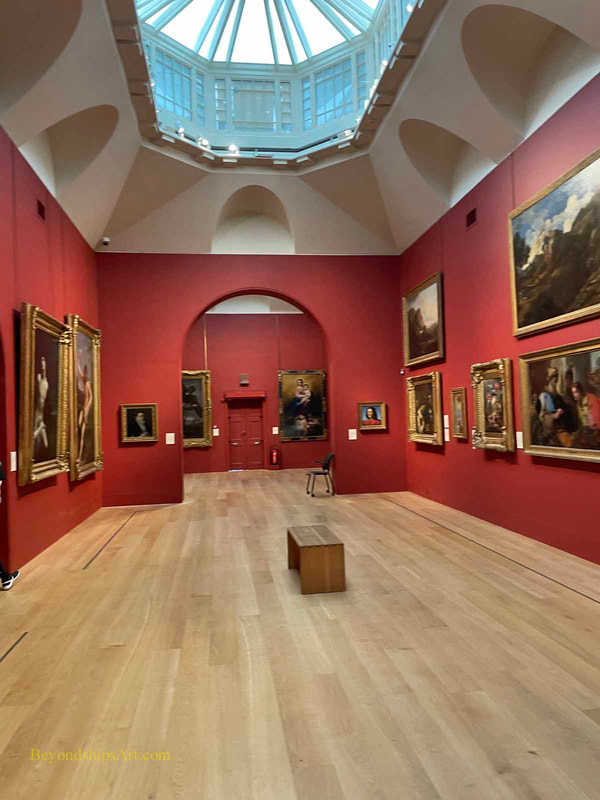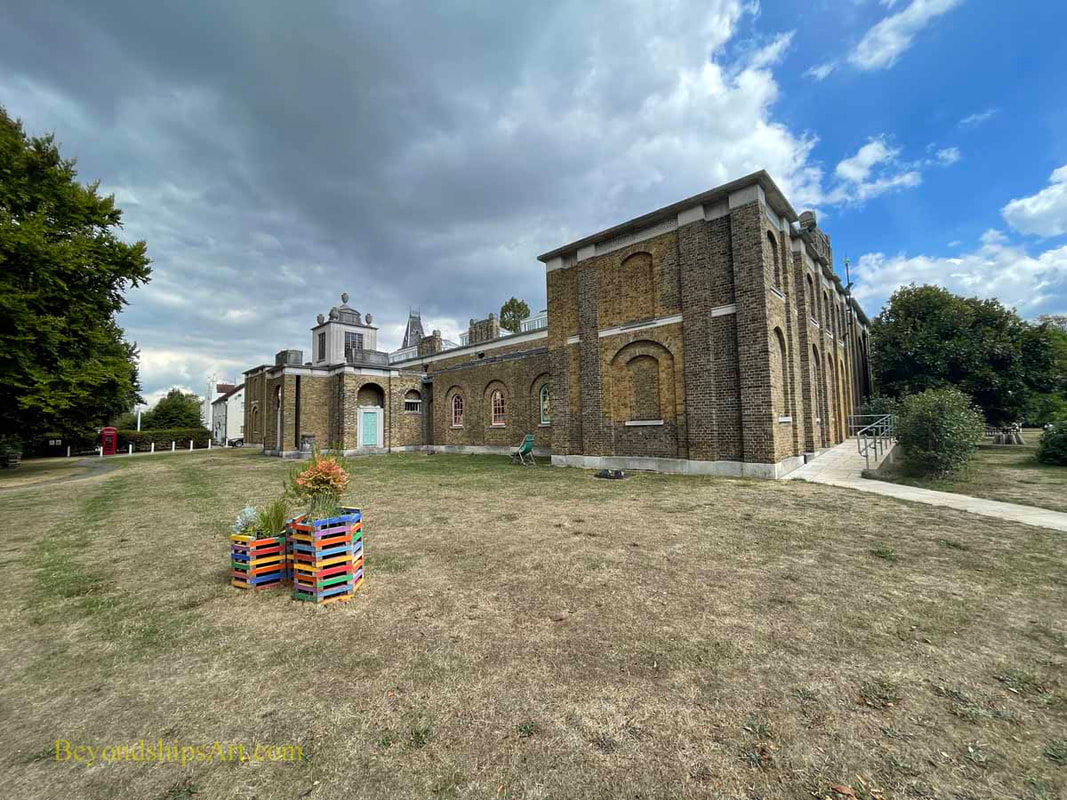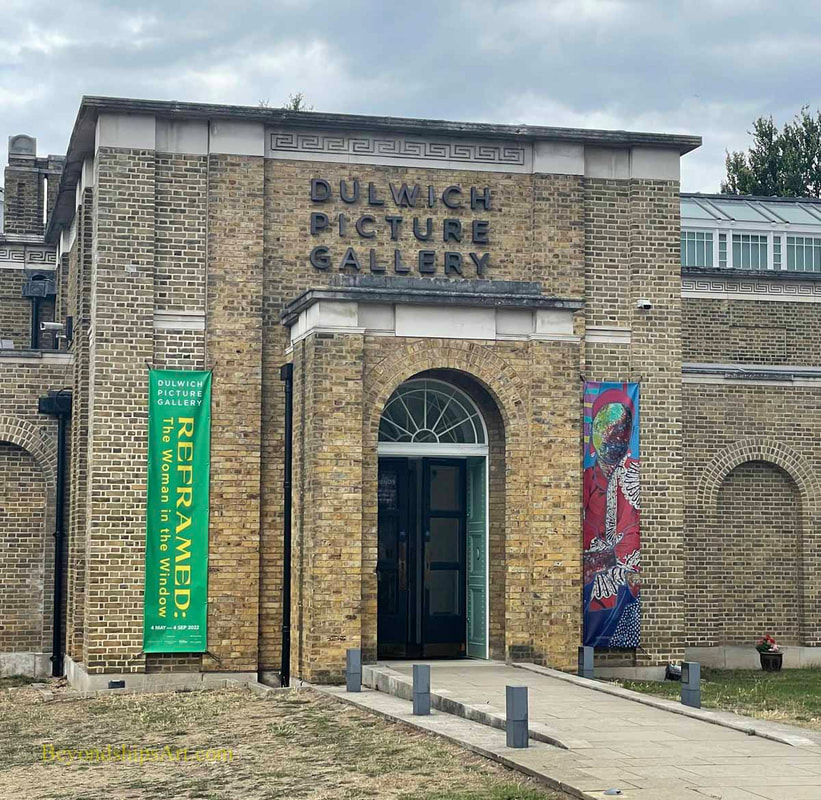|
London has more than one royal collection of art. There is, of course, the collection of the British monarch, which is on rotating display at the Queen's Gallery at Buckingham Palace. Also, a large number of works from the Spanish royal collection was bestowed upon the first Duke of Wellington for his part in evicting Napoleon's brother from the Spanish throne. These works can be seen at Apsley House. A third royal collection can be seen at the Dulwich Picture Gallery.
In 1790, King Stanislaus Augustus of Poland commissioned Noël Desenfans and Peter Bourgeois to assemble a royal art collection for Poland. Desenfans was a French writer who who moved to England where he married Margaret Morris, who came from a wealthy family. Noel began to dabble in selling art. Bourgeois was born in London and came under Desenfans' protection when he became orphaned. He studied art and rose to be not only a member of the Royal Academy but court painter to King George III. In addition, Bourgeois assisted Noel in his art dealing. During a trip on the Continent, Bourgeois became friends with the brother of King Stanislaus Augustus. This led to a commission to paint a portrait of the king, which so pleased King Stanislaus Augustus that he gave Bourgeois an honorific title. In recognition of this honor, George III gave Bourgeois permission to call himself “Sir” when he was in England. It also led to the commission to build a royal collection for Stanislaus Augustus. Bourgeois, Noel and Margaret Desenfans spent the next five years touring Europe purchasing paintings for the collection. They focused on European art, especially works by the Baroque Old Masters. The Desenfans spent an estiamted 9,000 pounds on the project. By 1795, the collection was nearing completion. In that year, however, Poland disappeared from the map of Europe as an independent nation and King Stanislaus Augustus abdicated. Consequently, Bourgeois and the Desenfans had a royal collection but no royal patron. They tried to interest the Tsar of Russia in buying the collection but he declined. They also tried to sell the collection at auction but that too was unsuccessful. Interested in having the collection seen by the public, they also tried to persuade the British government to establish a national gallery with this collection as its foundation. However, the time had not yet arrived for such an idea. Following Noel Desenfans death in 1807, Bourgeois became the sole owner of the still unsold collection. At the suggestion of a friend, Bourgeois drew up a will leaving the collection to Dulwich College, a public (i.e., private) boys school on the outskirts of London. He also left a bequest of 2,000 pounds for the construction of a building in which the collection could be shown to the public. After Bourgeois' death in 1811, the collection went to Dulwich College, which already had a collection of Tudor portraits. As specified by Bourgeois, Sir John Soane designed an inovative new gallery which made use of indirect natural light. Soane also designed a mausoleum to house the remains of Bourgeois and the Desenfans. The gallery opened to students of the Royal Academy in 1815 and to the general public in 1817. It thus became the first purpose-built art gallery open to the public. The collection was enhanced by major donnations of British portraiture in 1835 and 1911. As a result, the Dulwich Picture Gallery is particularly strong not only in French, Italian and Spanish baroque art but also in British portraiture. It is not a large museum. However, the collection includes 600 works by artists such as Rembrandt, Reynolds, Rubens, Raphael, Gainsborough, Poussin, Canaletto, Constable and Lawrence. Unlike London's other royal collections, the Dulwich Picture Gallery is not located in Central London. Rather, it is found in Dulwich, a pretty suburban area with trees and green space. Travel from Central London to Dulwich does not take long via train from Victoria Station. For more information on visiting, see the Dulwich Picture Gallery website. For more information on visiting London, see our London page
Apsley House Bankside Gallery British Museum The Courtlauld Gallery The Guildhall Art Gallery Hayward Gallery The National Gallery The Queen's Gallery Mall Galleries Royal Academy of Arts Saatchi Gallery Serpentine Gallery The Tate Britain The Tate Modern Victoria and Albert Museum The Wallace Collection For more places to see art See our Places to See Art index |
Above: In addition to designing the gallery building, Sir John Soane designed an adjoining mausoleum to hold the remains of Peter Bourgeois and husband and wife Noel and Margaret Desenfans who assembled the original collection. Soane's design for the roof of the mausoleum inspired architect Giles Gilbert Scott when he designed Britain's iconic red public telephone boxes in the 1920s.
Below: The main entrance to the Dulwich Picture Gallery. In addition to the original gallery, there is a shop, a cafe and an education center. |
Places to see art - - London, England - - Dulwich Picture Gallery


